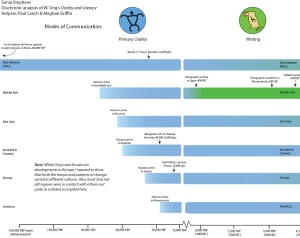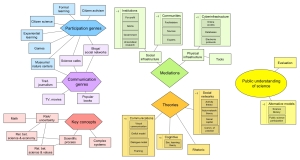As fascism was creeping through Europe, Walter Benjamin wrote “The Work of Art in the Age of its Technological Reproducibility.” In it, he lays out a politically-driven, positive view of the effects of new representational technologies on the relationship of society to art. While Benjamin’s view of the effects of this new relationship was positive, his essay also warns of the forces of fascism trying to subvert this process and marry art to politics. A German Jew, he committed suicide in 1940 when detained in fascist Spain while trying to escape Germany for the U.S. A depressing ending, considering some of the optimistic(?) ideas in this piece.
Summary: Benjamin discusses the ways in which, he contends, the ready availability of photographs and film have changed the relationship between spectators and artistic works. For example, the original context of artistic works was that they were one of a kind (“authentic”), and viewed in ritualized ways (e.g., as religious icons, or contemplated during a museum visit). Mechanical reproducibility lets one take these works out of context and view them anywhere- particularly in distracted settings. He contends that this demystification of art is positive; art now becomes political (i.e., can be used for political ends in the education of the masses), not cultish. (One place in which cult value is hanging on is in portraiture.) With film, spectators are now “quasi-experts,” because they can also be on camera themselves- there is less reverence for the actors. The relationship of the masses to art is changed; critical appraisal and simple enjoyment are unified in works with high social impact (in works with low social impact, the converse is true). We now internalize art while in a state of distraction (e.g., in a movie theater), rather than placing ourselves into the artwork in traditional art appreciation; he likens this state of distraction to that of experiencing architecture while taking part in day-to-day activities.
Comments: As a Marxist, Benjamin frequently links the demystification of art with the advance of the proletariat, and the attempt to re-mystify art (and aestheticize politics) with fascism. I’m not sure how well his predictions have borne out re: the easy accessibility of art and raised political consciousness in the masses (I think that advertising research, for example, suggests something different). On another note, there are links here to some authors on scientific visuals. For example, Benjamin states that, with photography and cinema, artistic and scientific (informational) content of art is identical- I think the situation is more complex than that: there are multiple levels of meaning that can be experienced in such representations.
Links to: Ong (representational practices); Headrick (technologies of representation)

